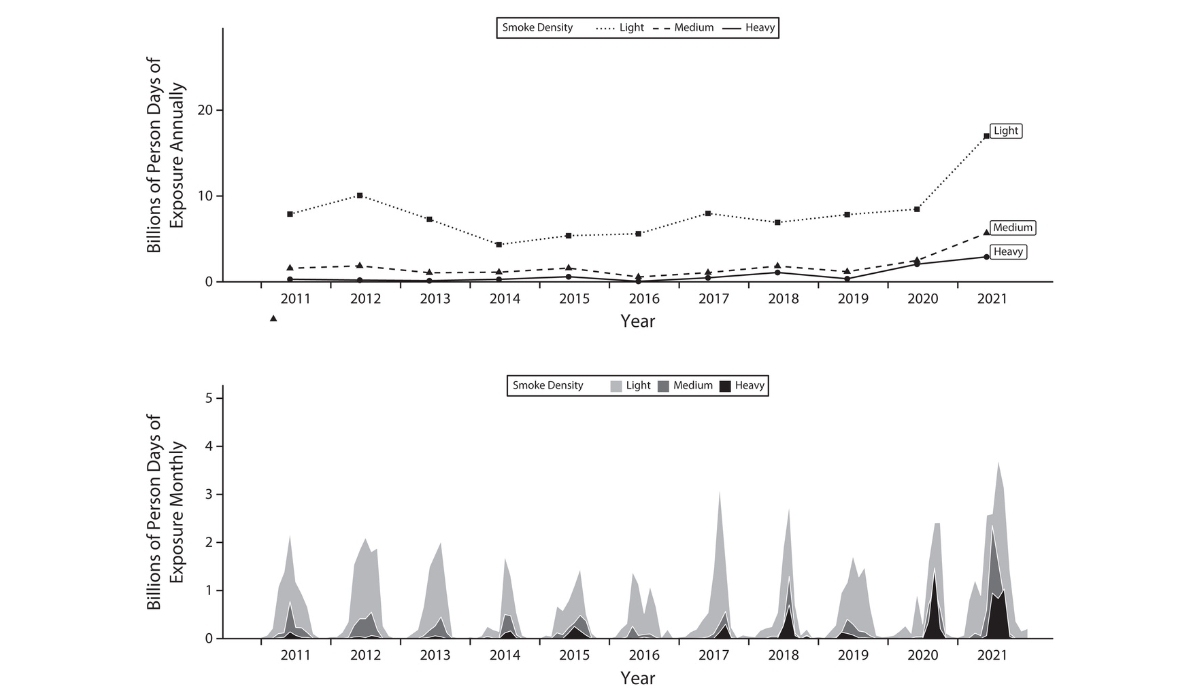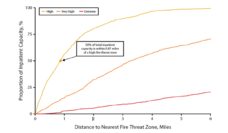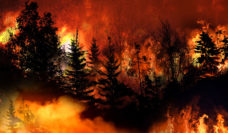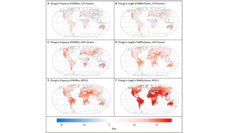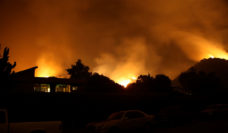In June 2023, 120 million Americans across the Midwest and East Coast were under air quality alerts as more than 500 wildfires burned across Canada. Wildfire smoke can spread over thousands of miles, decreasing air quality and increasing concentrations of harmful air pollutants, which can cause a number of negative respiratory and cardiovascular health effects.
Current recommendations to reduce smoke exposure include staying indoors with adequate air filtration, reducing physical activity, and wearing respiratory protection, such as N95 masks outdoors. For those with limited resources, following this guidance can be difficult. Persons living in houses or apartments without high-quality central air conditioning and those who work predominantly outside without proper protection may struggle to reduce their exposure to smoke. Those experiencing homelessness, face additional risk due to lack of shelter and lack of access to information.
Researcher Jason Vargo and colleagues analyzed data on wildfire smoke plume densities collected by satellites and population census tracts to identify the magnitude of community exposure to wildfire smoke between 2011 and 2021. The researchers then combined that information with data from the Center for Disease Control’s Social Vulnerability Index (SVI) to track the socioeconomic status, household composition, and cultural characteristics of the communities most affected by smoke.
The figure above shows the changes in smoke density since 2011. Exposure to light, medium, and heavy wildfire smoke densities increased significantly over the study period, and 87.3% of the U.S. population experienced increases in exposure to heavy smoke density. Western states, including Idaho, Oregon, and Washington, as well as eastern states, including Maryland, South Carolina, and Virginia, had substantial increases in heavy smoke exposure. The researchers note that exposure was not equally distributed, with the largest increases occurring in areas with the greatest overall disadvantages for healthy living as measured by a higher SVI score.
The researchers argue that creating specific interventions, such as increasing preparedness messaging, supplies, and recovery support for these communities, may improve the health of individuals exposed to the pollutants caused by distant fires burning out of control.
Databyte via Jason Vargo, Brooke Lappe, Maria Mirabelli, and Kathryn Conlon. Social Vulnerability in US Communities Affected by Wildfire Smoke, 2011 to 2021. American Journal of Public Health, 2023.









